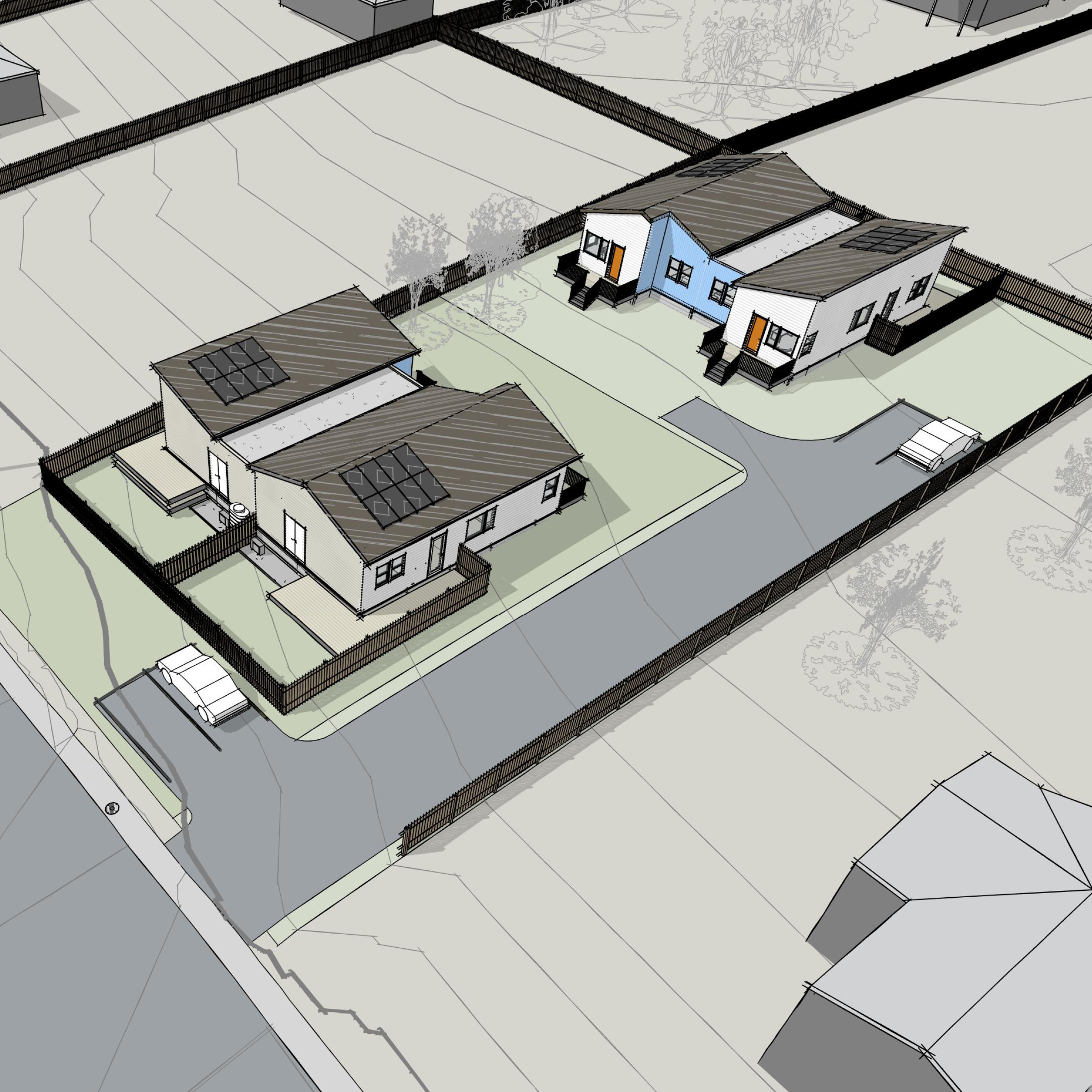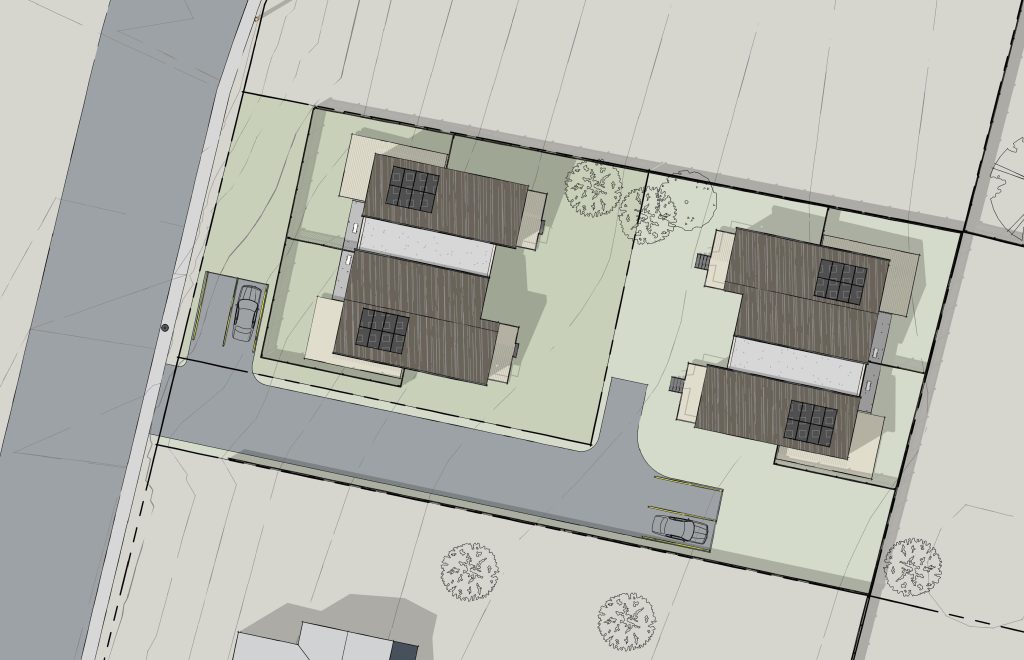THINKING: construction housing
California SB9: four units on single family lots, finally!

California Senate Bill 9, or CA SB9, also known as the California Housing Opportunity and More Efficiency (HOME) Act, was signed by Governor Gavin Newsom on September 16, 2021 and went into effect on January 1, 2022. With California’s housing crisis, this is another way that the state is trying to address the housing shortage and affordability crisis.
A study analyzing CA SB9 completed by UC Berkeley’s Terner Center for Housing Innovation concluded that the new housing law will allow for the creation of approximately 700,000 additional units in California’s existing neighborhoods. By allowing homeowners to split their lots, homeownership will expand—not just rental housing. The increase in housing supply will hopefully result in more reasonably priced homes as well as rental units.
What is the California SB9 Law?
California SB9 goes even further than ADU laws towards ending single family zoning. The goal is to increase urban density and ease the housing shortage (Homeowners in Los Angeles can read our detailed post about Urban Lot split, ADUs, and Additional SB 9 Units here.) The new housing law permits up to four homes on most single-family lots statewide via a two step process:
- Owners may build a second unit on an existing single family lot or subdivide an existing structure.
- Single family parcels can be subdivided (by right) into two parcels, and then two units can be placed on each of the parcels.
Additional criteria for either lot splits or two units developments include:
- The site must be in a single family residential zone.
- The lot must be in an urbanized area/urban cluster as determined by the U.S. Census Bureau.
- Housing can’t be tenant occupied (for at least 3 years preceding the project) and can’t have been withdrawn form the market in the past 15 years.
- Affordable or rent controlled housing can’t be demolished or altered.
- Cities don’t have to allow the use of ADU laws on sites also being modified via SB9.
- The lot can’t be a historic landmark or within a historic district.
- High fire risk zones are exempt.
For lot splits specifically, the following parameters also apply:
- Each new lot is at least 1,200 square feet, (though the local agency may set a lower minimum).
- The split results in two new lots of approximately equal size (60/40 split at most).
- An affidavit that the applicant intends to use one of the housing units as a principal residence for at least three years from the date of approval is required.

What’s the difference between California SB9 and ADUs?
Removing barriers to the construction and financing of ADUs has resulted in an effective solution to resolving the state’s housing crisis. The impact of these legislative changes is evident –jurisdictions in California issued 5,911 ADU permits in 2018 jumping to 15,571 permits in 2019. SB9 builds upon the early success of the ADU legislation, which is successful at adding smaller-scale, infill development to gently increase density.
While both the recent enactment of CA SB9 and the changes to ADU legislation aim to increase density and relieve California’s housing shortage, the laws represent two very different approaches.
Here’s some of the differences between the two:
- CA SB9 is only allowed in areas zoned for single family while ADU legislation in California allows for new accessory dwelling units in single family, multifamily and mixed use.
- Setbacks are the same for both SB9 and ADUs – 4 feet from the side and rear property lines.
- Both require that units not be used short-term rentals–units must be rented for a term that is longer than 30 days.
Additional Regulations Defining SB9
Local jurisdictions are also putting additional regulations on SB9 development, and the implementation of CA SB9 is still evolving across California’s cities and counties. Law Firm Holland and Knight has put together additional details about implementation of the law here.
Despite the restrictions, SB9 opens up even more development opportunities for people who want to add density to their lots in California. Overall, the changes in state regulations over the past five years have made it much easier to do this—between the state ADU laws, the State Density Bonus and SB9, there is a statewide toolkit that provides for a variety of options to develop and increase density on your property.
Interested in Utilizing California’s SB9?
If you are interested in utilizing SB9, pursuing an ADU project, or have questions about using the State Density Bonus on a multifamily property, get in touch with OpenScope Studio today.